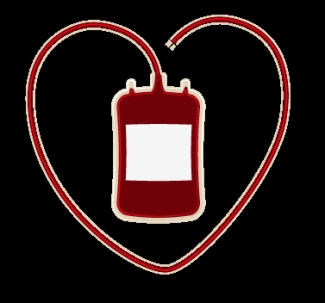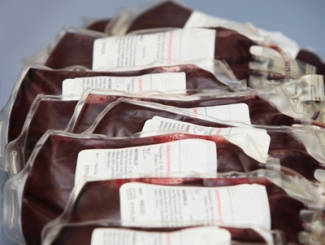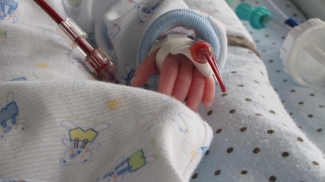
Paying it forward: Why we need YOU to give blood - Part 1
In this six-part series, Dr. Jeannie Callum, a hospital-based transfusion specialist, shares her real-life experience witnessing the impact of blood donation on patient lives. She provides some fascinating insight into blood transfusion, past and present, and emphasizes the need for male donors and why some donors may be safer for patients.
- Part 1: A miraculous gift, ready and waiting
- Part 2: Not your average bank
- Part 3: Blood type hype
- Part 4: Beyond matching ABO and Rh: Rare blood challenges and international cooperation
- Part 5: All blood is not the same
- Part 6: My own donation journey...
In health care, we take blood donation and transfusion for granted. We don’t do it on purpose, but it’s such a common intervention that we don’t think much about it. Actually, a remarkable 10 per cent of patients who get hospitalized receive a blood transfusion.
Day in and out, physicians order blood for a patient and the units come from the blood bank routinely and without question; the miracle of one person receiving blood from another’s donation fades into the backdrop. But once in a while, you see a patient brought back from the edge with transfusion. It was just such a patient that sent me with pen to paper to write about just how essential blood transfusion is for saving lives, and why more donors are needed; and more specifically, why more men need to donate (find out why in Part. 5).
Recently, a patient of mine with an immune blood disorder came to the emergency department in crisis. Every few years, his immune system gets confused and starts destroying his own blood. Usually the target of the attack is his platelets, which are small fragments of cells that help to stop bleeding. This time his immune system started to destroy all of his red blood cells.
Red blood cells are donut shaped cells filled with a protein called hemoglobin that shuttles oxygen from your lungs to the rest of your body. Without red blood cells, you can breathe in and out, but the oxygen won’t get picked up from the lungs and transported to the cells throughout the body. Essentially your cells start suffocating due to the lack of oxygen.
It started with red urine. Hemoglobin is red. When the red blood cells are blown up and destroyed, the hemoglobin is released into the blood stream. It is toxic when not appropriately contained within a cell membrane. The kidneys are particularly sensitive to the “free” hemoglobin and start leaking it into the urine. In a few days, his hemoglobin level dropped from 147 g/L, a normal level, to 79 g/L, and then over a few hours his immune system picked up speed and took the level down to 29 g/L. Eighty percent of his blood had been destroyed. He told me: “I feel like my body is trying to commit suicide.”
By the time we got the results of his very low blood level, he was losing consciousness. We grabbed four units of red blood cells from the blood bank and gave them to him over the next few hours. He went from the edge of life to sitting up chatting in the intensive care unit — an overwhelming relief for his family and his healthcare team. I immediately thought of those four blood donors. I wanted to pick up the phone and tell those four people about the life they had just saved.
Of course, I can’t do that. We don’t connect donors with patients; there is a confidential divide between them. Staff at the blood collection centre know who the donor is, and we at the hospital know who the recipient is; but never the two shall meet. My patient needed 20 units of blood before we were able to rein in his immune system so that he could safely go home.

I witness the miracle of transfusion regularly. I see it often in our trauma room. Patients with motor vehicle injuries come in without vital signs, but trauma room nurses have four units of blood ready and are able to promptly bring them back from the edge. About every six to eight weeks, a healthy woman comes in to deliver a baby, but when the placenta separates after birth the uterus refuses to contract and she starts bleeding profusely. There is such high blood flow to the uterus at term to nourish the infant that a woman can lose her entire blood volume through a bleeding placental bed in seven minutes. Fortunately, we are ready every time with enough blood to buy time for the obstetricians to gain control of the hemorrhage.
"There is no doubt in my mind that all of these patients would die without the magical gift of blood transfusion."
It is not just these dramatic bleeding cases that amaze me; it’s the chronic transfusion patients as well. We run an outpatient transfusion program at my hospital that supports patients with bone marrow failure from either a diseased bone marrow or leukemia. These patients sometimes need weekly transfusions of blood for two to four months while awaiting a remission induced by chemotherapy or from a bone marrow transplant. Some patients get from 50 to 100 units in one year to keep them alive; 50 to 100 blood donors just to support one person. Some patients in our outpatient transfusion program have been coming in weekly for transfusions for more than five years.
There are also the premature infants that need regular transfusions for the first few months of life. We use what the blood bank technologists call “a unit on tap”; a single unit lasts 42 days and we can take off a few tablespoons every few days and send it up to the neonatal intensive care unit. We have a special fridge just for the units on tap.

There is no doubt in my mind that all of these patients would die without the magical gift of blood transfusion.
Stay tuned: Part 2, titled "Not your average bank" will be published soon. Look for it here on RED on August 30.
Canadian Blood Services – Driving world-class innovation
Through discovery, development and applied research, Canadian Blood Services drives world-class innovation in blood transfusion, cellular therapy and transplantation—bringing clarity and insight to an increasingly complex healthcare future. Our dedicated research team and extended network of partners engage in exploratory and applied research to create new knowledge, inform and enhance best practices, contribute to the development of new services and technologies, and build capacity through training and collaboration. Find out more about our research impact.
The opinions reflected in this post are those of the author and do not necessarily reflect the opinions of Canadian Blood Services nor do they reflect the views of Health Canada or any other funding agency.
Related blog posts
It's National Blood Donor Week and we're celebrating blood donors from across the country who make a lifesaving difference to patients in need. Each of us has the right blood type to give life: ABOAB. This acronym refers to four blood groups — A, B, AB, and O. Blood type is one way we are all...
The James Kreppner Award program supports legal research relevant to Canadian Blood Services. Research priorities for the James Kreppner Award include the legal and regulatory aspects of (a) donation, collection, storage, and use of blood, blood products, and hematopoietic stem cells; and (b) organ and tissue donation and transplantation. The 2016 James Kreppner Award will support one project with up to $50,000 for a period of one year. This year’s competition closes Nov. 30 2016.

